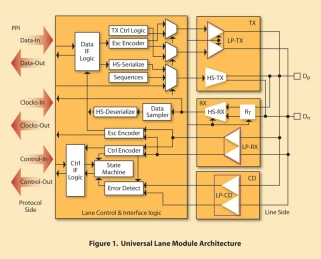MIPI D-PHY IP
Welcome to the ultimate MIPI D-PHY IP hub! Explore our vast directory of MIPI D-PHY IP
All offers in
MIPI D-PHY IP
Filter
Compare
282
MIPI D-PHY IP
from
24
vendors
(1
-
10)
-
MIPI CSI2 Interface Solution
- Brite provides full solution for the MIPI CSI interface, which receives the data from sensors in PHY layer, and then converts the byte data to pixel after lane data mergence.
- Data scramble is an optional feature to decrease the EMI effect.
- A standard PPI interface is implemented for the connection between MIPI PHY and CSI controller. Brite MIPI CSI interface solution supports image applications with varying pixel formats.
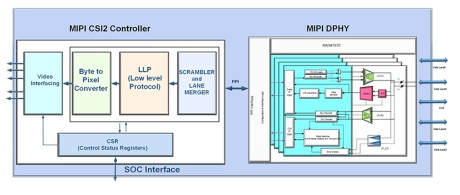
-
MIPI D-PHY TX PHY and DSI controller
- Scalability and Flexibility: Supports multiple data lanes for higher aggregate bandwidth, any of the multiple lanes can be configured into Clock Lane
- High Data Rates: Supports data transmission rates up to 4.5Gbps per lane, allowing for high-resolution displays and smooth refresh rates
- Energy Efficiency: Optimized for low power consumption, making it ideal for battery-powered devices
- Complete Solution: Combines the MIPI D-PHY Transmitter PHY and DSI Controller to make it a one-stop solution
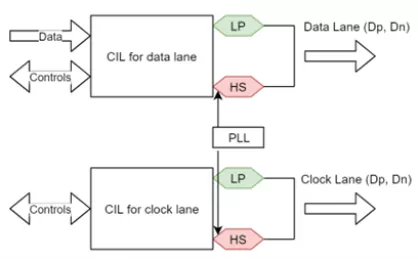
-
MIPI D-PHY℠ v2.5 IP Core
- This Tx/Rx transceiver complies with the MIPI Alliance C-PHY℠ v2.0 and D-PHY℠ v2.5 specifications, with world-class area and power dissipation, and is available for a range of foundry processes.
- This IP delivers 6 Gbps per lane for a max throughput of 24 Gbps in D-PHY℠ mode, and 6 Gsps per trio for a max throughput of 41.04 Gbps in C-PHY℠ mode.
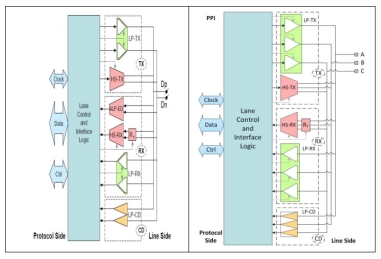
-
MIPI D-PHY v2.1 IP Core
- Compliant to MIPI® Alliance Standard for D-PHY specification Version 2.1
- Supports D-PHY 1.1 synchronous transfer mode at high speed mode with a bit rate of 80-1500 Mb/s without deskew calibration
- Supports DPHY 1.2 for 1500 – 2500 Mb/s with deskew calibration.
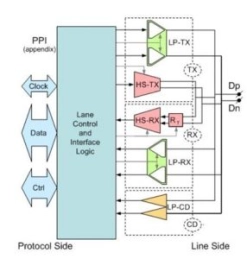
-
MIPI D-PHY Analog Transceiver IP Core
- The MIPI D-PHY Analog Transceiver IP Core is fully compliant with the D-PHY specification version 1.1.
- It supports the MIPI® Camera Serial Interface (CSI-2) and Display Serial Interface (DSI) protocols at speeds up to 1.5Gbps per lane.
- It is a Universal PHY that can be configured as a transmitter, receiver, or transceiver.
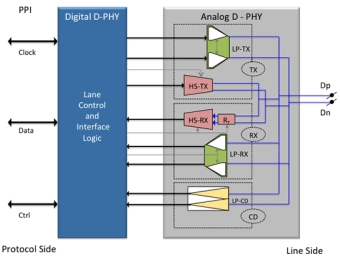
-
MIPI D-PHY TX+ (Transmitter)
- The MIPI® D-PHY TX+ is a proprietary implementation of the MIPI Camera Serial Interface 2 (CSI-2) and Display Serial Interface (DSI) D-PHY Transmitter.
- It is optimized to achieve full-speed production testing, in-system testing, and higher performance compared to traditional configurations, while reducing area and standby power.
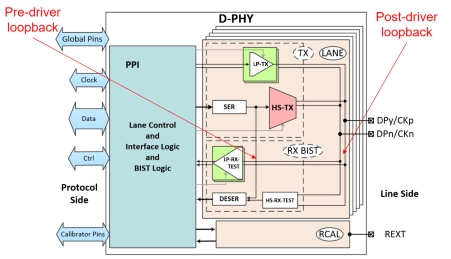
-
MIPI D-PHY RX+ (Receiver) IP
- The MIPI® D-PHY RX+ is a proprietary implementation of the MIPI Camera Serial Interface 2 (CSI-2) and Display Serial Interface (DSI) D-PHY Receiver.
- It is optimized to achieve full-speed production testing, in-system testing, and higher performance compared to traditional configurations, while reducing area and standby power.
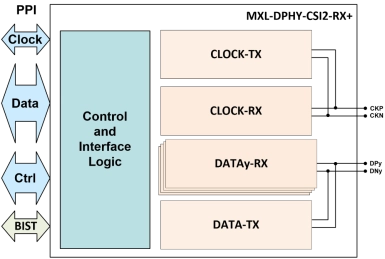
-
MIPI D-PHY/LVDS Combo Receiver IP
- The MXL-LVDS-MIPI-RX is a high-frequency, low-power, low-cost, source-synchronous, Physical Layer that supports the MIPI® Alliance Standard for D-PHY and compatible with the TIA/EIA-644 LVDS standard.
- The IP is configured as a MIPI slave and consists of 5 lanes: 1 Clock lane and 4 data lanes, which make it suitable for display serial interface applications (DSI).
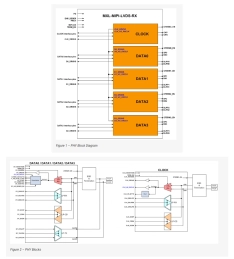
-
MIPI D-PHY/LVDS Combo Transmitter IP
- The MXL-LVDS-DPHY-DSI-TX is a combo PHY that consists of a high-frequency low-power, low-cost, source-synchronous, Physical Layer supporting the MIPI® Alliance Standard for D-PHY and a high performance 4-channel LVDS Serializer implemented using digital CMOS technology.
- In LVDS mode, both the serial and parallel data are organized into 4 channels. The parallel data is 7 bits wide per channel. The input clock is 25MHz to 150MHz. The serializer is highly integrated and requires no external components. The circuit is designed in a modular fashion and desensitized to process variations. This facilitates process migration, and results in a robust design.
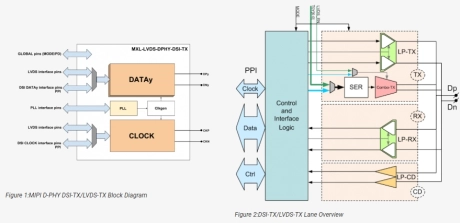
-
MIPI D-PHY IP
- The D-PHY is partitioned into a Digital Module – CIL (Control and Interface Logic) and a Mixed Signal Module. It is provided as a combination of Soft IP views (RTL, and STA Constraints) for Digital Module, and Hard IP views (GDSII/CDL/LEF/LIB) for the Mixed Signal Module.
- This unique offering of Soft and Hard IP permits architectural design flexibility and seamless implementation in customer-specific design flow.
